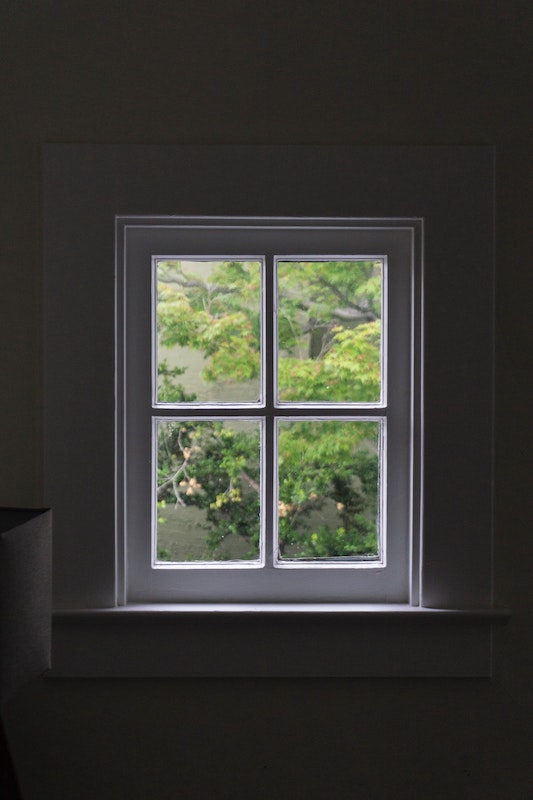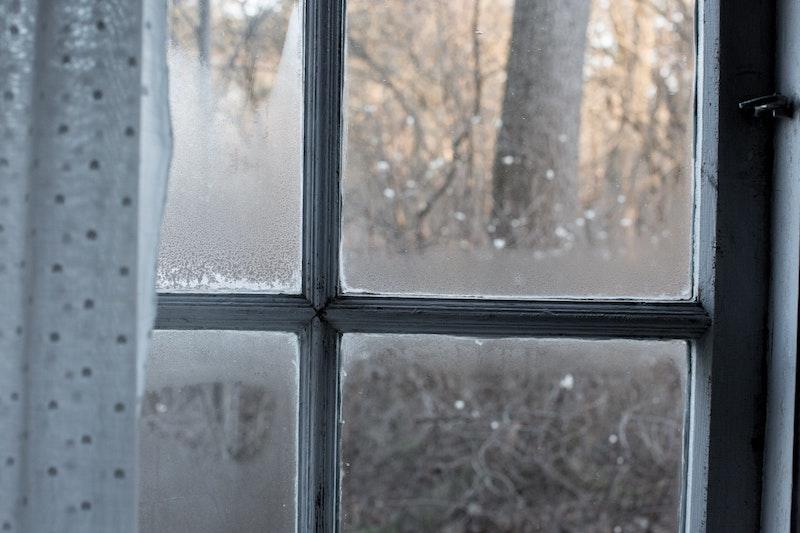Fog is a fact of window life. Where there's water vapor in the air (everywhere), there's the possibility of condensation — and consequently foggy windows, which may or may not be a sign of window seal failure.
Condensation is a byproduct of temperature differentials. The molecules in warm air are more loosely packed, leaving more pockets for tiny water vapor droplets to settle into. However, as warm air cools, the molecules begin to huddle closer, pinching the vapor droplets together into visible liquid water (the temperature at which this phase change happens is called the dew point) . Condensation appears on surfaces that are significantly cooler than the ambient temperature. It might show up on the outside of your favorite ice cold beverage. And it very well may show up on (or in) your windows. But should you be concerned?
When to worry about foggy windows
There are three places fog can appear on double (or triple) paned windows — windows with two or three layers of glass (glazings), typically with an insulating inert gas (such as argon or krypton) sandwiched in between to help moderate those differentials we were talking about.
- On the outside: A common occurrence on hot, muggy days when the external environment is considerably warmer and moister than your home's air-conditioned internal environment.
- On the inside: This phenomenon is reversed during the colder months, when humidity present in your house beads up on the inside of the window. The cold air outside the window condenses that moisture as fog (think of breathing inside your car during the winter). Running a dehumidifier can mitigate this effect.
- In between: These are the foggy windows you should be most concerned about, as they are indicative of window seal failure. The seal around the window's insulating glass unit (the collective term for the window panes, the entrapped nonreactive gas, and desiccants — moisture absorbers such as silica) helps optimize its overall function by preventing inward or outward air seepage.

Window seal failure risk factors
Window seals can fail for a variety of reasons, including manufacturing defects, misinstallation, or neglect. But the most common reason is also the most unpreventable — exposure over time. On any given day, the air between the glazings of a double-paned window undergoes a cycle of expansion and contraction called thermal pumping (imagine the action of an accordion — on mute if you'd prefer). During the day when it's warmer, the air expands. At night, the air cools. All those changes in pressure put a lot of stress on the window seal over time, forming tiny fractures.
They won't cause much of an issue at first. But eventually that built-in layer of inert gas will leak out and outside air will seep in. The additional moisture will oversaturate the silica pellets, allowing condensation to form. Mineral deposits may leave behind grime ("silica haze"), making it appear as if your windows are always dirty. Riverbedding, or indentations in the glass as a result of trickling water droplets, is a sign of further deterioration.
Since solar heating plays such a role in accelerating this process, it is a good idea to pick out an energy-efficient window with a low-emissivity (low-e) coating, a microscopically thin layer of silver oxide that filters infrared and ultraviolet rays. Regardless, expect the seals on windows that receive more sunlight to fail sooner than those in shaded areas.
What do about window seal failure
There are five courses of action one can take in the event of window seal failure.
- Insulating glass unit (IGU) replacement: Fortunately, about 3 out of 4 cases can be resolved by popping out the IGU, cleaning the frame, and inserting new glass into the vacancy. Although, this is a short-term fix with regards to the 2-3 year warranty offered on this service.
- Sash replacement: There are some instances where the sashes (the movable units that hold the glass panes) may need to be scrapped and swapped out. Sash replacements are ordered directly from your window manufacturer.
- Full window replacement: In extreme scenarios (about 5 percent of the time), the entire window, including framing, may need to be replaced. For more information, check out our post about insert windows vs. full frame window replacement.
- Nothing: In milder or more moderate climates, a failed window seal or two is not going to be all that impactful on your energy bills. The question then becomes "How much do foggy windows bother you?" Often, the haze will be so subtle you won't even notice it, aside from exceptionally hot or cold days.
Are you having trouble deciding which option is best for you? Allow Hodges Windows and Doors to assist. We partner with some of the world's most reputable window manufacturers and suppliers, and our professional staff has decades of experience in window repair and replacement, in whole or in part.



